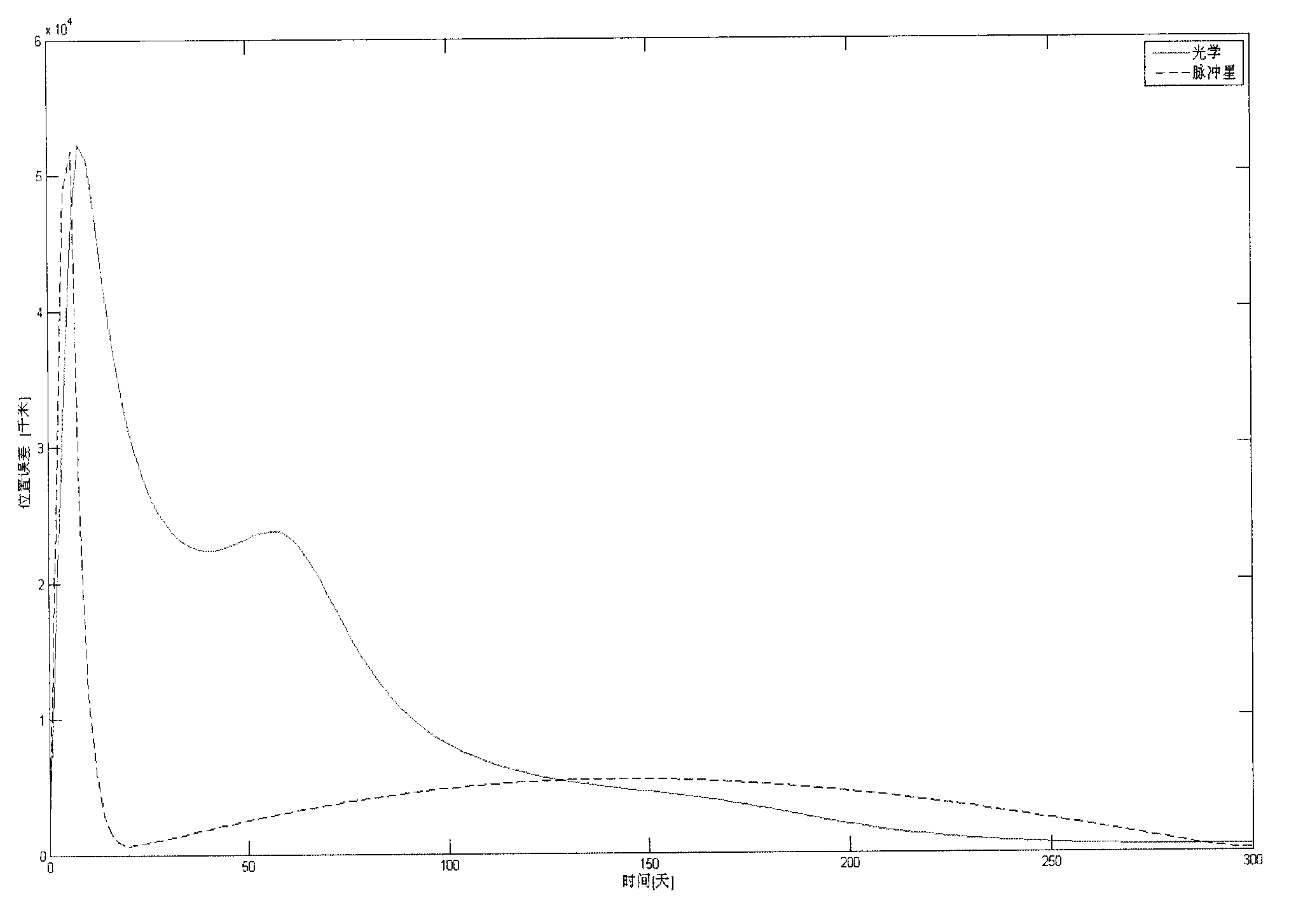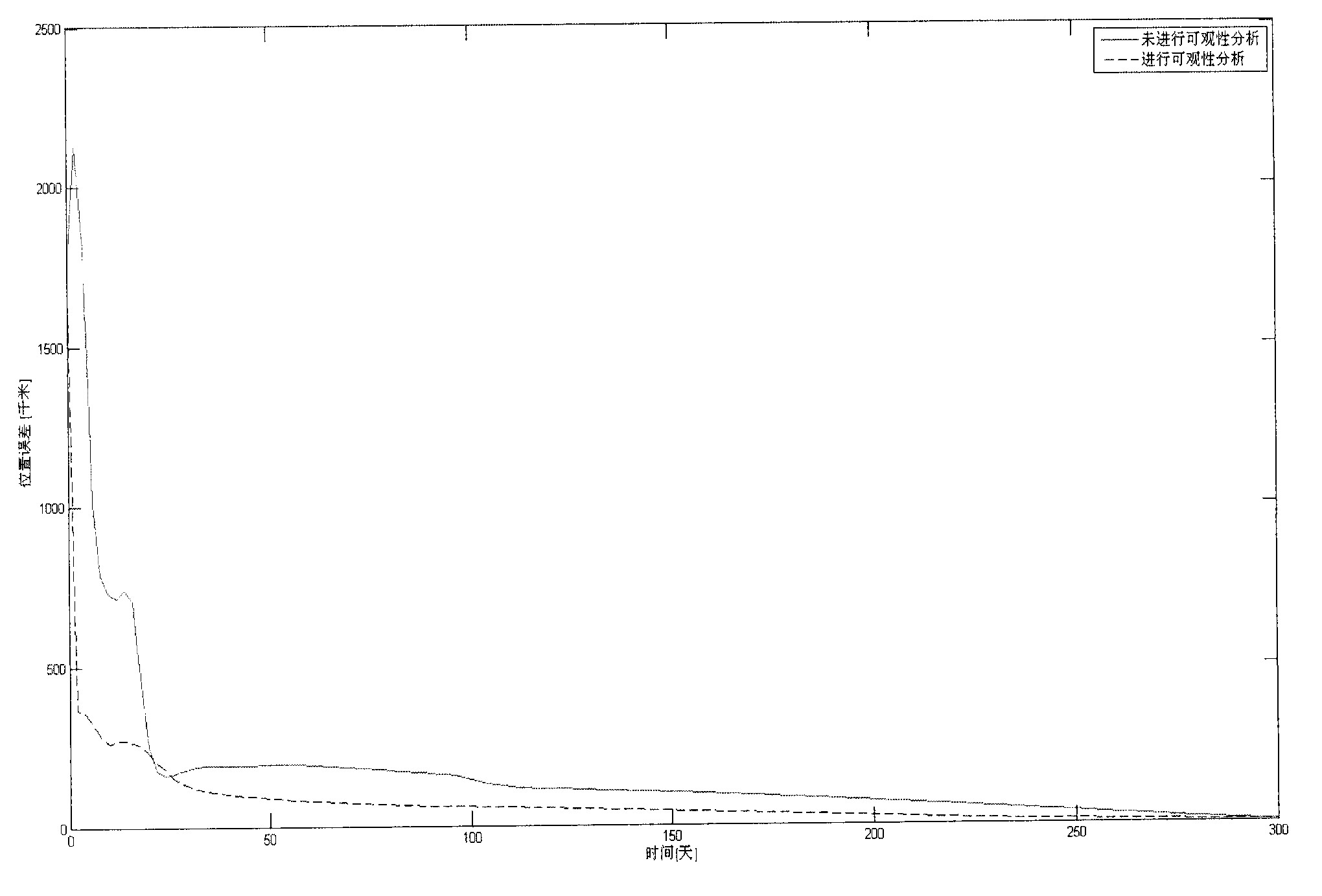Optical and pulsar fusion type self-navigating method based on observability analysis
A pulsar and optical technology, applied in the field of satellite navigation, can solve problems such as the inability to directly provide high-precision navigation information, and achieve the effect of improving navigation accuracy and performance
- Summary
- Abstract
- Description
- Claims
- Application Information
AI Technical Summary
Problems solved by technology
Method used
Image
Examples
Embodiment Construction
[0023] Such as figure 1 As shown, an autonomous navigation method of optics and pulsar fusion based on observability analysis, the steps are as follows:
[0024] (1) Install an optical sensor and a pulsar sensor on the detector, which are used to measure the line-of-sight direction of a single asteroid and the time when the pulse reaches the detector;
[0025] (2) Based on the optical navigation system of a single asteroid line-of-sight direction, the observation equation of optical navigation is established:
[0026] b ~ = Ar + v ,
[0027] in is the line-of-sight direction vector of the asteroid measured by the sensor; is the projection of the asteroid line-of-sight direction vector in the inertial system; R a , R are the position vector of the asteroid and the position vector of the detector; A is the attitude matrix from the inertial system to the sensor coordinate system;...
PUM
 Login to View More
Login to View More Abstract
Description
Claims
Application Information
 Login to View More
Login to View More - R&D
- Intellectual Property
- Life Sciences
- Materials
- Tech Scout
- Unparalleled Data Quality
- Higher Quality Content
- 60% Fewer Hallucinations
Browse by: Latest US Patents, China's latest patents, Technical Efficacy Thesaurus, Application Domain, Technology Topic, Popular Technical Reports.
© 2025 PatSnap. All rights reserved.Legal|Privacy policy|Modern Slavery Act Transparency Statement|Sitemap|About US| Contact US: help@patsnap.com



